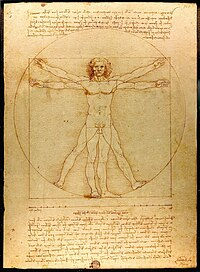
Eye‐movement behaviours when viewing real‐world pain‐related images
Sign Up to like & getrecommendations! Published in 2019 at "European Journal of Pain"
DOI: 10.1002/ejp.1363
Abstract: Pain‐related cues are evolutionarily primed to capture attention, although evidence of attentional biases towards pain‐related information is mixed in healthy individuals. The present study explores whether healthy individuals show significantly different eye‐movement behaviours when viewing… read more here.
Keywords: eye movement; pain; movement behaviours; pain related ... See more keywords

A cross-sectional examination of the 24-hour movement behaviours in Canadian youth with physical and sensory disabilities.
Sign Up to like & getrecommendations! Published in 2020 at "Disability and health journal"
DOI: 10.1016/j.dhjo.2020.100980
Abstract: BACKGROUND Canada's 24-Hour Movement Guidelines for Children and Youth provide daily recommendations for physical activity (PA), screen time, and sleep for optimal health. The appropriateness of such guidelines for youth with disabilities remains unknown. OBJECTIVE… read more here.
Keywords: sensory disabilities; movement; physical sensory; hour movement ... See more keywords

Association between preschooler movement behaviours, family dog ownership, dog play and dog walking: Findings from the PLAYCE study
Sign Up to like & getrecommendations! Published in 2022 at "Preventive Medicine Reports"
DOI: 10.1016/j.pmedr.2022.101753
Abstract: Highlights • Dog-owning preschoolers were more active, had lower screen time and slept more.• Dog-facilitated walking and play can support preschooler movement behaviours.• Potential for dog-facilitated activity to promote positive movement behaviours. read more here.
Keywords: preschooler movement; dog; association preschooler; movement behaviours ... See more keywords

Identifying patterns of movement behaviours in relation to depressive symptoms during adolescence: A latent profile analysis approach.
Sign Up to like & getrecommendations! Published in 2020 at "Preventive medicine"
DOI: 10.1016/j.ypmed.2020.106352
Abstract: Movement behaviour guideline adherence has been associated with lower depressive symptoms during adolescence, yet no studies have used person-centered approaches to examine this relationship. The purpose of the present study was to identify whether unique… read more here.
Keywords: depressive symptoms; movement; symptoms adolescence; analysis ... See more keywords

Relationship between parents' and children's objectively assessed movement behaviours prior to and during the COVID‐19 pandemic
Sign Up to like & getrecommendations! Published in 2022 at "Pediatric Obesity"
DOI: 10.1111/ijpo.12923
Abstract: The coronavirus disease 2019 (COVID‐19) pandemic could have provoked undesirable harmful effects on movement behaviours among children. read more here.
Keywords: parents children; movement behaviours; children objectively; covid pandemic ... See more keywords

Protocol for the Let’s Grow randomised controlled trial: examining efficacy, cost-effectiveness and scalability of a m-Health intervention for movement behaviours in toddlers
Sign Up to like & getrecommendations! Published in 2022 at "BMJ Open"
DOI: 10.1136/bmjopen-2021-057521
Abstract: Introduction Despite being an important period for the development of movement behaviours (physical activity, sedentary behaviour and sleep), few interventions commencing prior to preschool have been trialled. The primary aim of this trial is to… read more here.
Keywords: movement; movement behaviours; trial; efficacy ... See more keywords

Exploring the associations of daily movement behaviours and mid-life cognition: a compositional analysis of the 1970 British Cohort Study
Sign Up to like & getrecommendations! Published in 2023 at "Journal of Epidemiology and Community Health"
DOI: 10.1136/jech-2022-219829
Abstract: Background Movement behaviours (eg, sedentary behaviour (SB), moderate and vigorous physical activity (MVPA), light intensity physical activity (LIPA) and sleep) are linked to cognition, yet the relative importance of each component is unclear, and not… read more here.
Keywords: time; daily movement; cognition; movement ... See more keywords

Movement behaviours are associated with lung function in middle-aged and older adults: a cross-sectional analysis of the Canadian longitudinal study on aging
Sign Up to like & getrecommendations! Published in 2018 at "BMC Public Health"
DOI: 10.1186/s12889-018-5739-4
Abstract: BackgroundPhysical activity has been shown to attenuate the age-associated decline in lung function; however, there is little research evaluating different movement behaviours as potential correlates of lung function. Modifiable determinants need to be identified, as… read more here.
Keywords: function; movement behaviours; lung function;

Timing of 24-hour movement behaviours: implications for practice, policy and research.
Sign Up to like & getrecommendations! Published in 2022 at "Health promotion and chronic disease prevention in Canada : research, policy and practice"
DOI: 10.24095/hpcdp.42.4.05
Abstract: For health benefits, Canadians need to: move when it suits them; remove screens from bedrooms and limit screen use prior to bedtime; and adjust bedtime so that they can sleep the recommended amount. The 24-Hour… read more here.
Keywords: hour movement; movement; movement behaviours; policy ... See more keywords